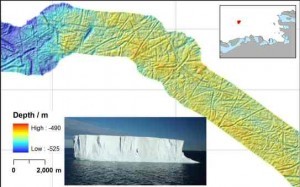Following the Trail of Ancient Icebergs
A few days ago we reached our main study area in the eastern Amundsen Sea. Here we are using sonar to map the contours of the seafloor in great detail. During the last glaciation the Antarctic ice sheet was much larger and covered most of the continental shelf, an underwater extension of the continent that… read more
February 21, 2010

